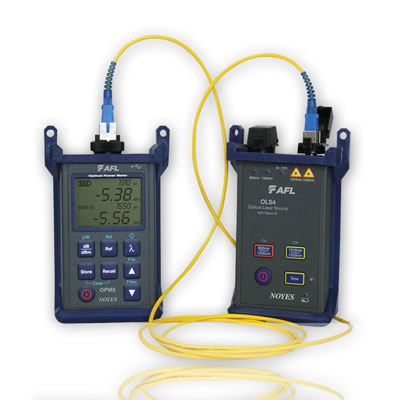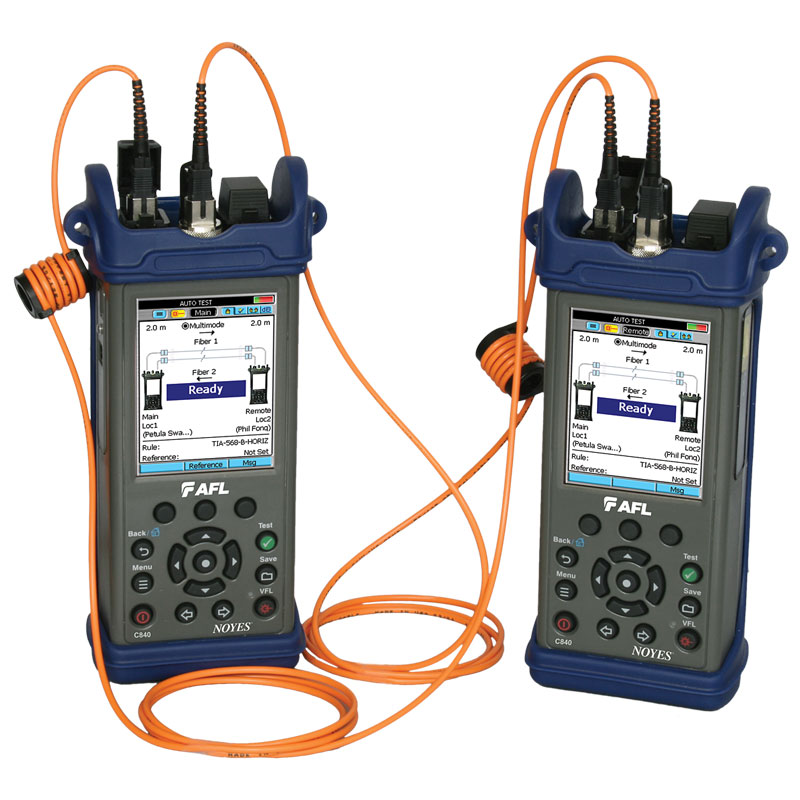The use of ofda enhances fibre evaluation with cutting-edge optical technology.
The use of ofda enhances fibre evaluation with cutting-edge optical technology.
Blog Article
Discover the Importance of Optical Fibre Testing in Modern Telecom
In the world of contemporary telecommunications, the importance of optical fibre screening can not be overemphasized, as it serves as the backbone for guaranteeing network integrity and efficiency. What are the specific benefits that routine screening offers, and exactly how might it shape the future landscape of telecoms?

Understanding Optical Fibre Testing
Optical fibre testing is an essential process in telecommunications that makes certain the stability and performance of fibre optic networks. This testing encompasses a variety of treatments created to review the physical and useful qualities of optical fibers - fibre testing equipment. Trick specifications assessed include optical power loss, data transfer capability, and mistake area, which are crucial for maintaining top notch interaction web links
The screening process usually involves the usage of specialized devices such as Optical Time-Domain Reflectometers (OTDR) and Optical Power Meters. OTDRs are utilized to determine and characterize mistakes, interlaces, and connectors within the fibre, while power meters gauge the transmitted light signal strength to ascertain efficiency.
In addition, screening is conducted at numerous stages, including throughout setup, upkeep, and troubleshooting, to ensure that the network meets sector criteria and functional needs. Compliance with standards established by companies like the International Telecommunication Union (ITU) and the Telecoms Market Association (TIA) is vital.
Benefits of Routine Evaluating
Normal screening of optical fibers returns various advantages that considerably enhance network dependability and efficiency. One of the primary benefits is the early detection of possible issues, such as breaks or degradation in the fibre, which can result in pricey downtime if left unaddressed (robotic vision). By determining these problems proactively, telecoms companies can lessen service interruptions and make certain regular connection for their customers
Additionally, regular testing helps to keep the stability of signal high quality. As optical fibres age, their efficiency can be impacted by variables such as ecological conditions and physical stress and anxiety. Routine analyses permit the monitoring of signal loss and general transmission effectiveness, making certain that the network runs at optimum degrees.
An additional substantial benefit is conformity with industry requirements. Routine testing sustains adherence to regulatory requirements, thereby mitigating legal and monetary threats linked with non-compliance. It boosts the general lifespan of the fiber framework by helping with timely maintenance and repairs.

Typical Checking Techniques
Testing optical fibers uses numerous techniques to make sure the integrity and efficiency of telecoms networks. Among one of the most typical techniques is Optical Time Domain Reflectometry (OTDR), which evaluates the whole length of the fiber by sending a pulse of light and determining the reflections triggered by imperfections or breaks. This approach provides comprehensive info regarding the place and intensity of mistakes.
One more common technique is making use of Optical Power Meters, which determine the quantity of light transferred with the fiber. This method assists establish the loss of signal toughness, guaranteeing that it satisfies industry standards. Furthermore, Visual Fault Locators (VFL) are employed to identify breaks or severe bends in the fibre by forecasting a noticeable laser light right into the wire.
Insertion loss screening is also important, as it evaluates the loss of signal power arising from connections and entwines within the network. The use of Polarization Setting Dispersion (PMD) testing examines the effect of fiber qualities on signal integrity.
Each of these methods plays an essential duty in maintaining the performance and dependability of optical fibre networks, eventually contributing to smooth telecommunications procedures.
Impact on Network Efficiency
The honesty and efficiency of optical fibre networks straight affect total network performance. In contemporary telecoms, the efficiency of information transmission counts heavily on the high quality of the optical fibres used. Any deterioration in the fiber's problem-- whether due to physical damages, contamination, or extreme bending-- can lead to boosted attenuation and signal loss, significantly influencing data stability and speed.
Normal optical fiber testing is important to determine and rectify possible issues prior to they show up as network failures or stagnations. Methods such as Optical Time Domain Reflectometry (OTDR) and insertion loss screening allow specialists to gauge the performance of fiber web links accurately. These examinations not only review the physical condition of robotic vision the fibers however also make certain compliance with sector standards, thereby guarding the network's dependability.
Furthermore, a properly maintained optical fibre network adds to minimized operational expenses and boosted client complete satisfaction, as end-users experience less interruptions and greater data prices. Inevitably, the focus on extensive optical fibre testing techniques acts as a cornerstone for maintaining robust telecoms facilities, making certain that company can meet the growing demands for data transfer and connection in today's electronic age.
Future Patterns in Evaluating
As we look ahead, improvements in modern technology are positioned to improve optical fiber screening in telecoms. The increase of automation and expert system (AI) is expected to enhance the efficiency and accuracy of screening procedures. Automated screening systems can carry out extensive evaluations with minimal human intervention, substantially minimizing the capacity for errors and speeding up time-to-deployment.
Furthermore, the integration of artificial intelligence formulas will certainly allow predictive maintenance, permitting network service providers to foresee possible concerns before they escalate into failings. This aggressive strategy not only improves network dependability but likewise optimizes functional expenses.
One more emerging pattern is the development of mobile testing gadgets that use real-time analysis - robotic vision. These devices will encourage professionals to perform on-site diagnostics quickly, helping with quicker resolutions and improving service quality
The growth of 5G networks better requires the evolution of screening approaches. As data transfer needs increase, conventional testing strategies may no much longer are enough. Cutting-edge remedies such as optical time-domain reflectometry (OTDR) and advanced spooky evaluation will become crucial in making sure the stability and efficiency of high-speed connections.

Final Thought
In final thought, optical fibre testing is important for making sure the integrity and dependability of contemporary telecommunications networks. Normal testing techniques not only assist recognize prospective issues such as signal loss and faults however also add to improved network efficiency and consumer satisfaction. As the demand for seamless connectivity remains to expand, the fostering of innovative screening approaches will play a critical function in keeping high-quality network standards and supporting the progressing landscape of telecoms.
Report this page